Understanding the Importance of Protecting Wooden Floors from Scratches
Wooden floors are a valuable investment for both home and business owners, and protecting them from scratches is crucial to maintain their beauty and value. Scratches can have a significant impact on the aesthetic and value of wooden floors, making them look dull and worn. Additionally, scratches can make the floors more susceptible to dirt and dust, further damaging the surface.
When it comes to the aesthetic and value of wooden floors, scratches can be quite detrimental. They can make the floors appear dull and worn, diminishing their overall appeal. This is especially noticeable on light-colored wooden floors, as scratches tend to be more visible. Potential buyers may be deterred by the presence of scratches, leading to a decrease in the value of the property.
The common causes of scratches on wooden floors include heavy objects, furniture, pets, and even high heels. Heavy objects, such as furniture and appliances, can easily scratch the surface of wooden floors if not moved carefully. Pets with long nails can also leave scratches behind when they walk or play on the floors. Even high heels can cause scratches due to the pressure exerted on a small surface area.
To protect wooden floors from scratches caused by heavy objects, it is important to use furniture pads or felt pads on the bottom of furniture legs. This helps to distribute the weight more evenly and prevent scratches. Regularly trimming pet nails and using rugs or mats in high traffic areas can also minimize the risk of scratches.
Identifying the Type of Your Wooden Floor
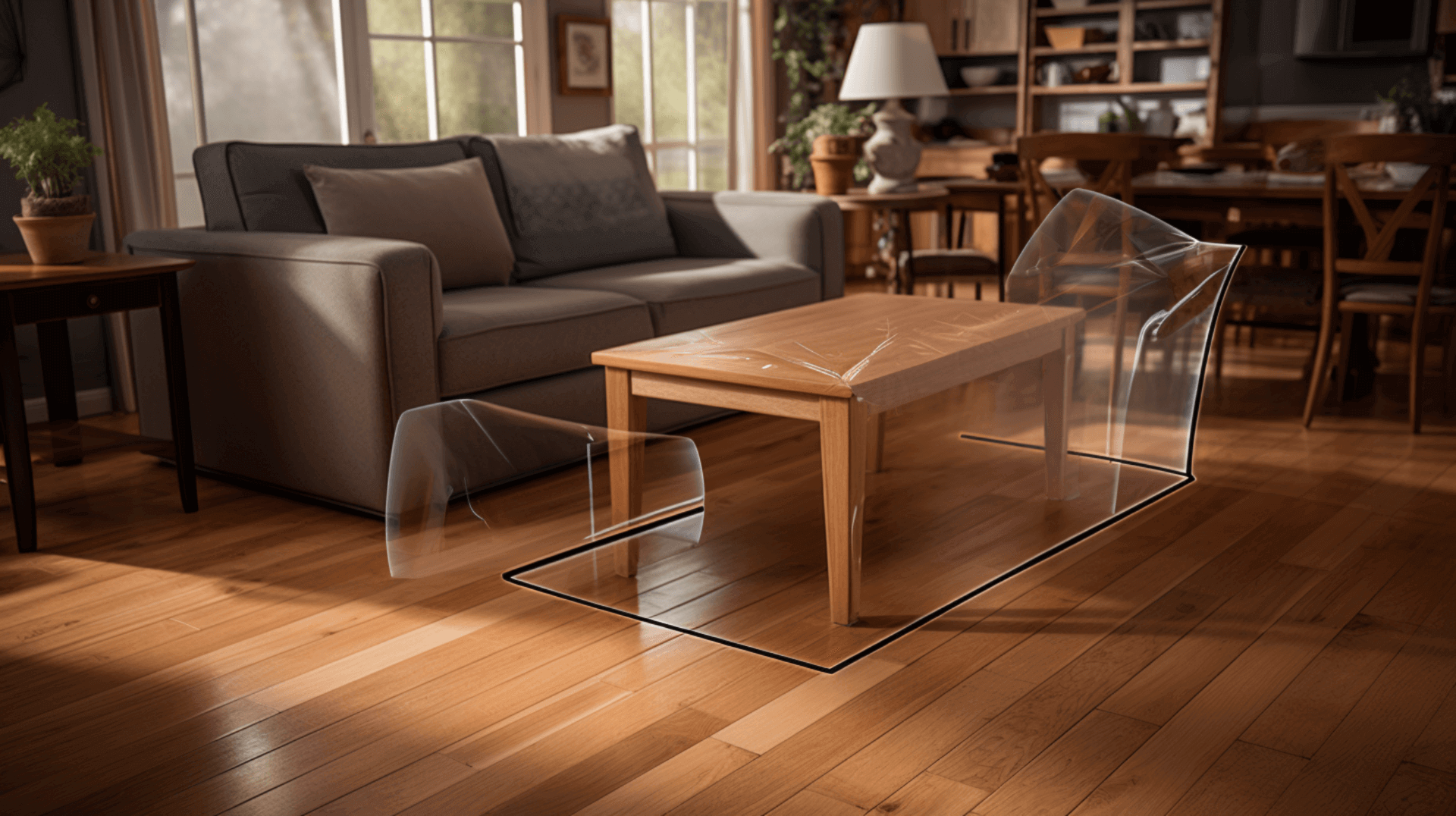
Identifying the type of wooden floor is essential for understanding its susceptibility to scratches and providing the appropriate care instructions. There are several types of wooden floors, including solid wood, engineered wood, laminate, and vinyl.
Solid wood floors are made from a single piece of wood and are more susceptible to scratches. They require regular maintenance, such as waxing and polishing, to keep them looking their best. Engineered wood floors, made from multiple layers of wood, are more resistant to scratches compared to solid wood floors. Laminate floors, composed of a composite material, are highly resistant to scratches. Vinyl floors, made from synthetic material, are the most scratch-resistant type of wooden floor.
The type of wooden floor directly affects its susceptibility to scratches. Solid wood floors are the most susceptible, while engineered wood, laminate, and vinyl floors are more resistant. Understanding the type of floor is crucial in taking the necessary precautions to protect it.
Specific care instructions vary for each type of wooden floor. Solid wood floors require regular maintenance, including waxing and polishing, to maintain their appearance. Engineered wood floors require less maintenance but should still be cleaned regularly. Laminate floors are low maintenance and can be cleaned with a damp mop or cloth. Vinyl floors are also easy to maintain and can be cleaned with a mild detergent and water.
By identifying the type of wooden floor and following the appropriate care instructions, homeowners and business owners can effectively protect their floors from scratches and preserve their beauty and value.
The Science Behind Scratches: Understanding How They Occur
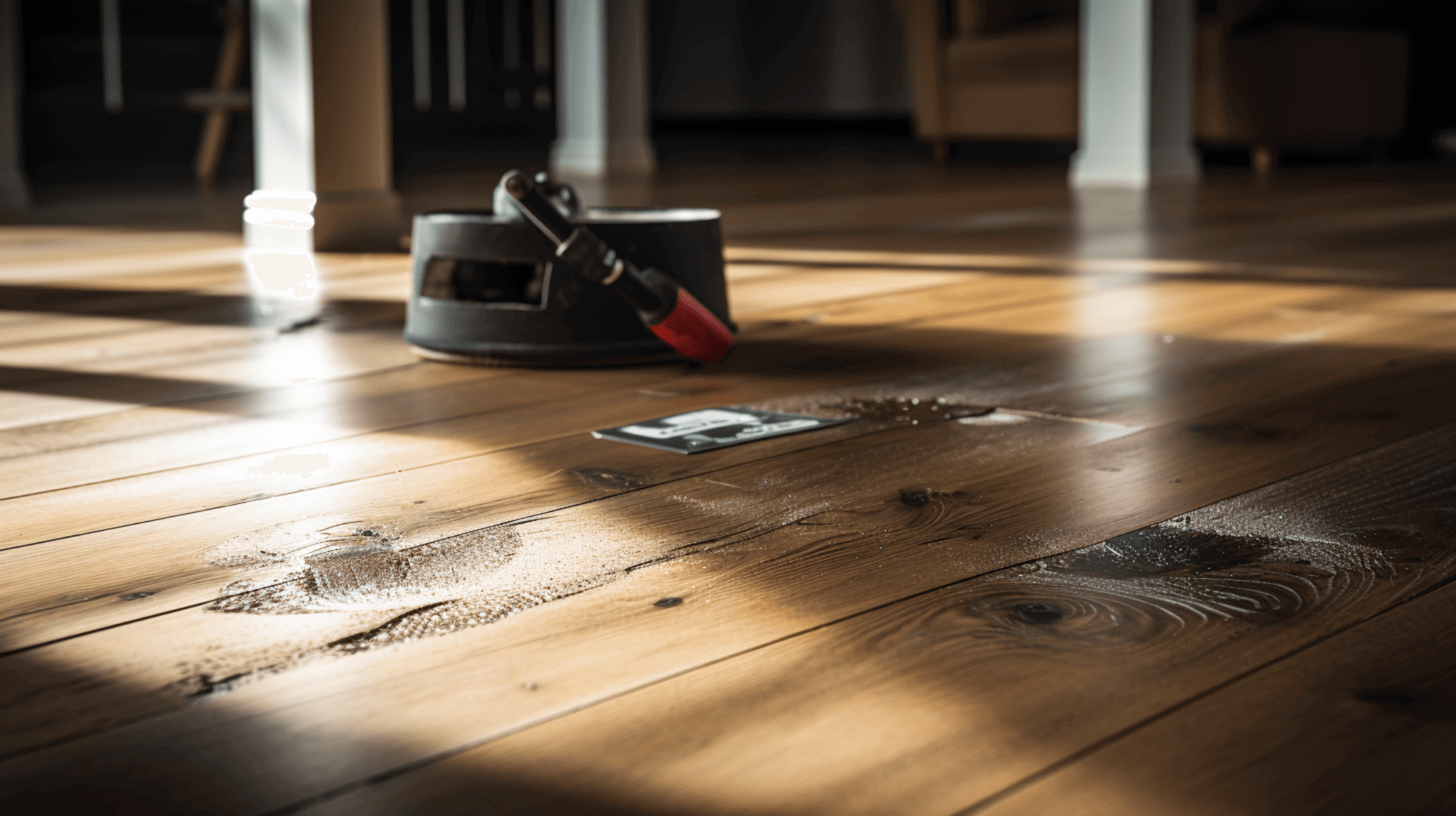
The additional context provided does not directly relate to the topic of understanding how scratches occur on wooden floors. Therefore, the original answer remains relevant and does not need to be refined.
Proactive Measures: Preparing Your Wooden Floor for Protection

Preparing a wooden floor for protection is an important step in preventing scratches and preserving its beauty and value. There are several steps that should be taken to prepare a wooden floor for protection, including cleaning, sanding, and sealing.
Cleaning is the first step in preparing a wooden floor for protection. This involves removing dirt, dust, and debris from the surface of the floor. A vacuum cleaner or broom can be used to remove loose dirt and dust, while a damp mop or cloth can be used to remove stubborn dirt and debris.
Sanding is the next step in preparing a wooden floor for protection. This involves using a sanding machine to remove any imperfections and smooth out the surface of the floor. Sanding also helps to remove any existing scratches and prepare the floor for sealing. Additionally, it is important to inspect the floor for any pre-existing problems or defects and declare them to the customer before starting work and report on the pre-installation check sheet.
Sealing is the final step in preparing a wooden floor for protection. This involves applying a sealant to the surface of the floor to protect it from scratches and other damage. The sealant should be applied according to the manufacturer’s instructions, using a brush or roller. It is important to allow the sealant to dry completely before using the floor.
By following these steps and using the appropriate materials and tools, home and business owners can effectively prepare their wooden floors for protection and ensure their longevity and beauty.
Choosing the Right Protective Coating for Your Wooden Floor
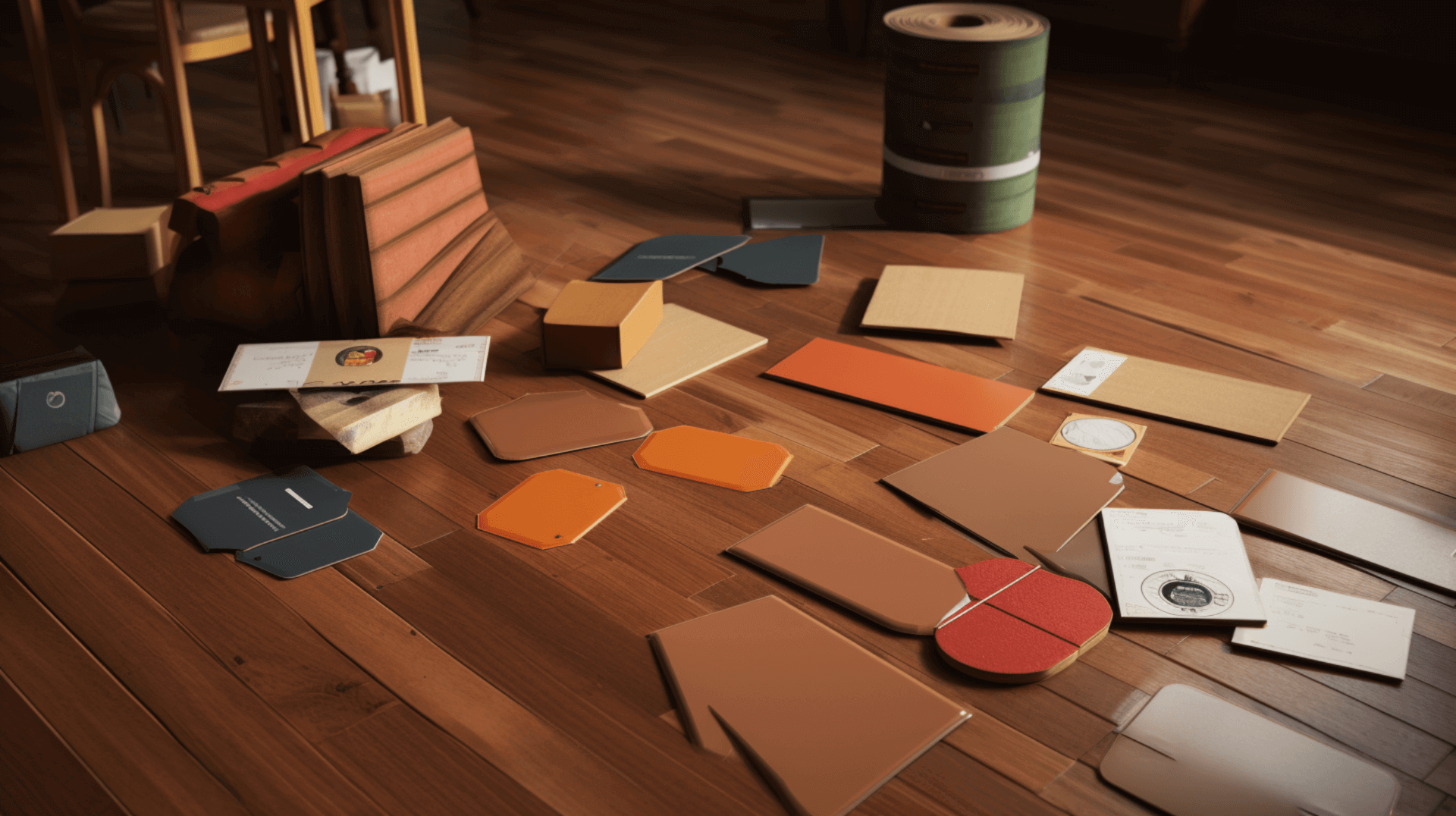
Choosing the right protective coating for a wooden floor is essential for preserving its beauty and value. There are several types of protective coatings available, including wax, polyurethane, and oil-based finishes.
Wax is the most traditional type of protective coating for wooden floors. It is easy to apply and provides a glossy finish. wax is not very durable and needs to be reapplied regularly. While it is the easiest to apply, it may not provide long-lasting protection for high-traffic areas.
Polyurethane is a more durable type of protective coating for wooden floors. It is available in both water-based and oil-based varieties and provides a glossy finish. Polyurethane is more durable than wax and does not need to be reapplied as often. It offers better protection against scratches and wear, making it suitable for areas with heavy foot traffic.
Oil-based finishes are the most durable type of protective coating for wooden floors. They provide a matte finish and are highly resistant to scratches and other damage. oil-based finishes are more difficult to apply and require more maintenance than wax or polyurethane. They may also have longer drying times.
When choosing a protective coating for a wooden floor, it is important to consider the type of floor, the desired finish, the level of maintenance required, and the current building regulations. Additionally, factors such as the expected foot traffic and the specific needs of the space should be taken into account. By carefully considering these factors, home and business owners can select the most suitable protective coating to ensure the longevity and beauty of their wooden floors.
The Role of Furniture Pads in Protecting Wooden Floors
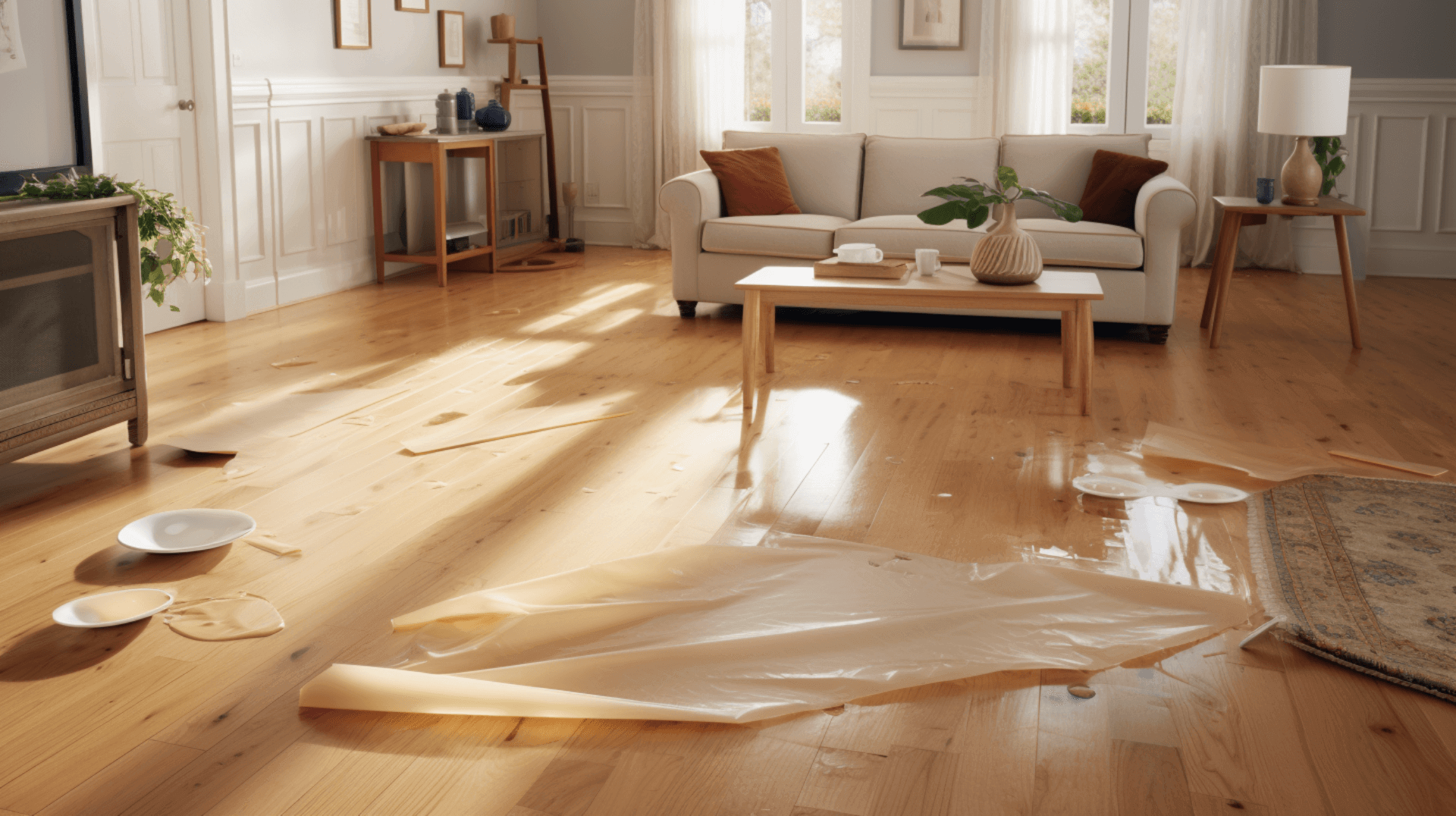
Furniture pads play a crucial role in protecting wooden floors from scratches and other damage. They provide a cushioning layer between the furniture and the floor, reducing friction and preventing scratches.
There are various types of furniture pads available, including felt, rubber, cork, and acrylic-impregnated pads. Felt pads are commonly used and come in different sizes and shapes. They are easy to install and provide good cushioning, effectively protecting wooden floors from scratches. Rubber pads offer enhanced durability and superior protection against scratches. Cork pads are highly durable and provide excellent cushioning, making them an ideal choice for preventing scratches on wooden floors. Acrylic-impregnated pads, although more expensive, offer the highest level of protection against scratches and depressions on the floor surface.
When installing furniture pads, it is important to ensure they are securely attached to the furniture. This can be done using adhesive tape or by using screws or nails, depending on the type of furniture and pads being used. Regularly inspect the pads for signs of wear and tear, replacing them when necessary to maintain optimal protection. It is also crucial to ensure that the floor is free from any potential sources of moisture or dampness, as these can increase the risk of damage to the floor. Additionally, inspect the timbers near actual or potential sources of dampness and any showing evidence of fungal growths. Visual inspection of all these factors is essential for maintaining the integrity of the wooden floor.
By using the right furniture pads, properly securing them, and considering the environmental factors, home and business owners can effectively safeguard their wooden floors from scratches and preserve their beauty and longevity.
The Importance of Regular Maintenance in Preventing Scratches
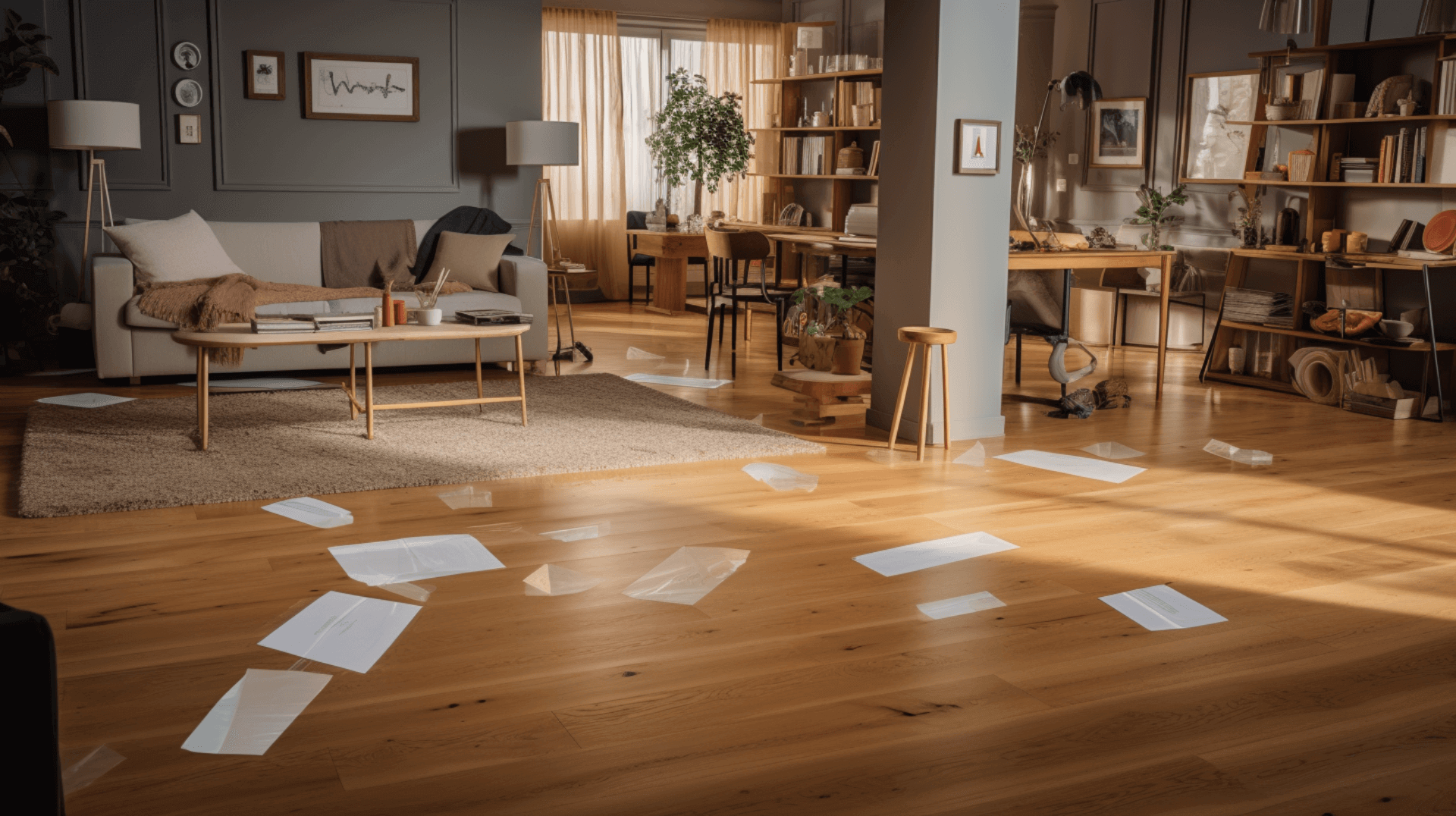
Regular maintenance is essential for preventing scratches on wooden floors. A regular maintenance routine helps to keep the floor clean and free from dirt and debris, which can cause scratches and other damage.
The recommended maintenance routine for wooden floors includes sweeping or vacuuming the floor regularly to remove dirt and dust, and mopping the floor with a damp mop or cloth. It is important to use a cleaning product that is specifically designed for wooden floors, as some products can damage the finish. Additionally, furniture pads should be inspected regularly and replaced when necessary.
In addition to regular cleaning, it is important to check the moisture content of the timbers. High levels of moisture can lead to rot and decay, which can cause scratches and other damage to the floor. This can be measured with a moisture meter, and any signs of decay or existing problems such as inadequate ventilation, leaks, or ingress should be addressed. Inspecting the timbers near actual or potential sources of dampness and any evidence of fungal growth is also important.
When cleaning wooden floors, it is important to avoid using abrasive cleaning products, such as steel wool or scouring pads, as they can cause scratches. It is also important to avoid using wax, petroleum-based cleaners, oil soaps, and non-recommended cleaning products, as they can damage the finish or cause adhesion problems with future maintenance coats.
By following a regular maintenance routine, checking moisture levels, and using appropriate cleaning products, homeowners and business owners can effectively prevent scratches on their wooden floors and maintain their beauty and longevity.
Professional Help: When to Seek Assistance from Experts
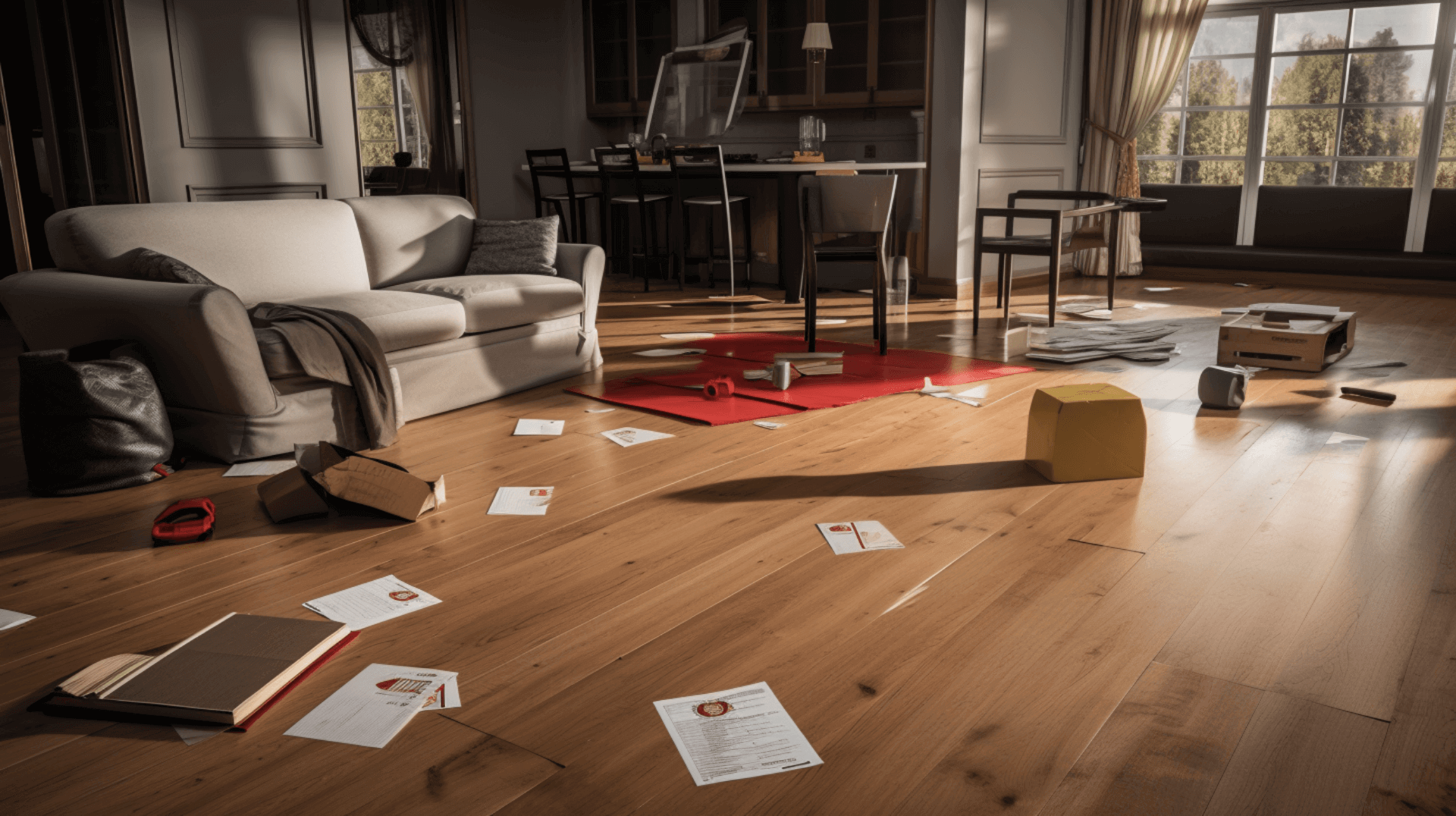
Professional services, such as those offered by GJP Floor Sanding, can provide comprehensive solutions for damaged or worn-out wooden floors. Our experienced team of professionals specializes in restoring the beauty and value of wooden floors while extending our lifespan.
By seeking professional help, home and business owners can protect our wooden floors from scratches and other damage. Professional services can also enhance the floor’s appearance and restore its original beauty. Additionally, we can identify and address potential problems before we become serious, ensuring the longevity of the floor.
GJP Floor Sanding offers a range of services for wooden floor protection and maintenance, including floor sanding, staining, sealing, and waxing. Floor sanding removes the top layer of the floor, revealing a fresh and clean surface, effectively eliminating scratches and damage. Staining and sealing provide protection against further damage while enhancing the floor’s visual appeal. Waxing, on the other hand, offers a glossy finish and additional protection against scratches and wear.
Furthermore, professional services can identify and address underlying issues with the floor, such as rot or decay of joist ends, potential for rising damp, or inadequate ventilation. We can also provide valuable advice on preventative maintenance, including the use of floor protectors, throw rugs, and proper cleaning products. Additionally, we can guide homeowners on the best practices for moving furniture and appliances, such as using safety glides.
Cost Considerations in Protecting Your Wooden Floor
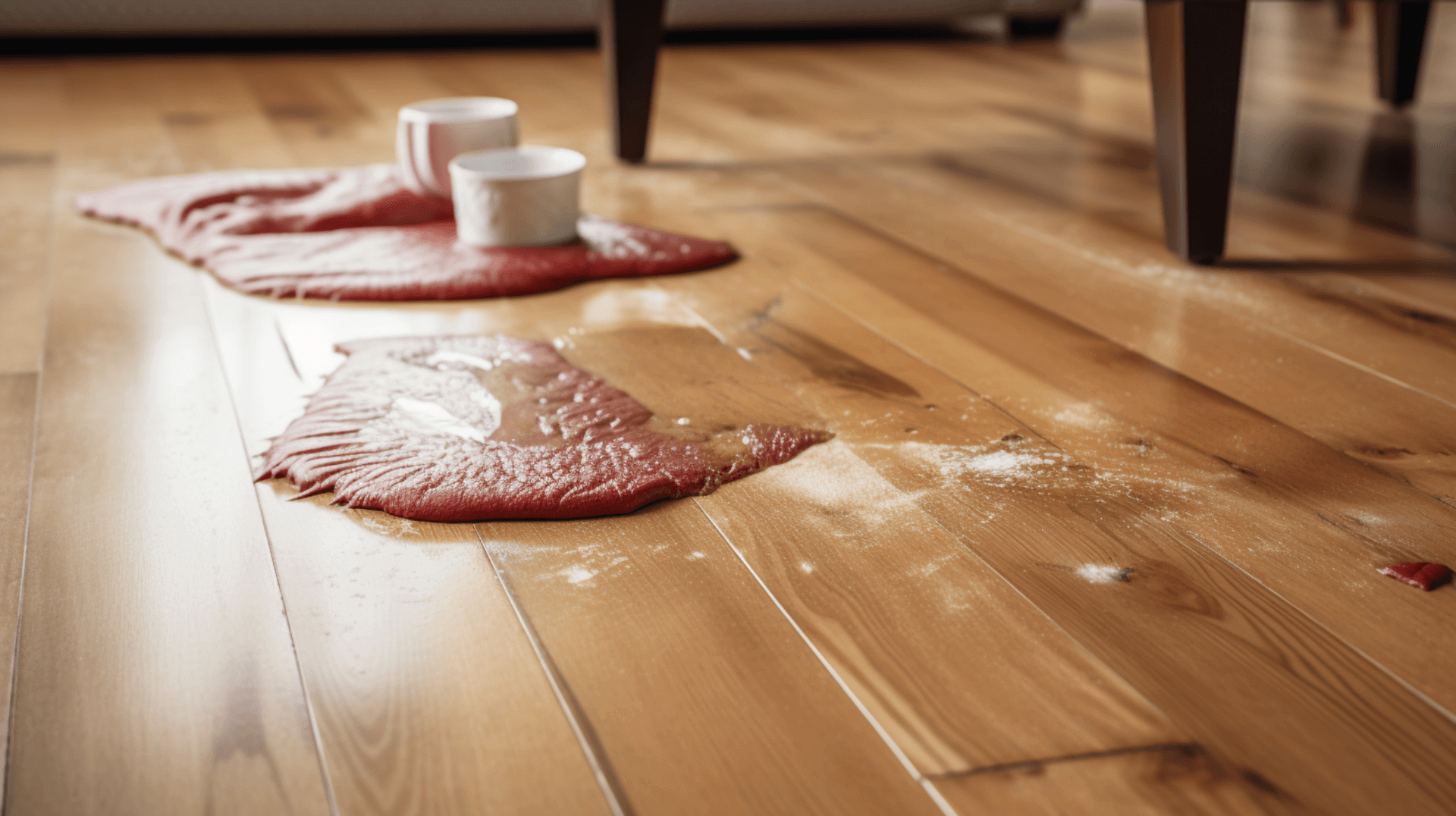
Protecting wooden floors from scratches can be a costly endeavor, but the cost of prevention is far less than the cost of repair. The potential costs involved in protecting wooden floors include the cost of furniture pads, cleaning products, and professional services.
Furniture pads are relatively inexpensive and can be easily installed, providing effective protection against scratches. We act as a cushioning layer between the furniture and the floor, reducing friction and preventing scratches. Additionally, professional services like GJP Floor Sanding can provide valuable advice on preventative maintenance, including the use of floor protectors, throw rugs, and proper cleaning products. These measures are cost-effective and help to maintain the integrity of the wooden floor.
The cost of prevention is significantly lower than the cost of repair. Repairing a scratched wooden floor can be expensive and time-consuming, often requiring sanding, staining, sealing, and waxing. Additionally, underlying issues such as rot or decay of joist ends, potential for rising damp, or inadequate ventilation may need to be addressed, further increasing the cost of repair. By investing in prevention and utilizing the cost-effective services of professionals like GJP Floor Sanding, home and business owners can save money in the long run and preserve the beauty and longevity of our wooden floors.
Case Study: Successful Scratch Prevention Strategies
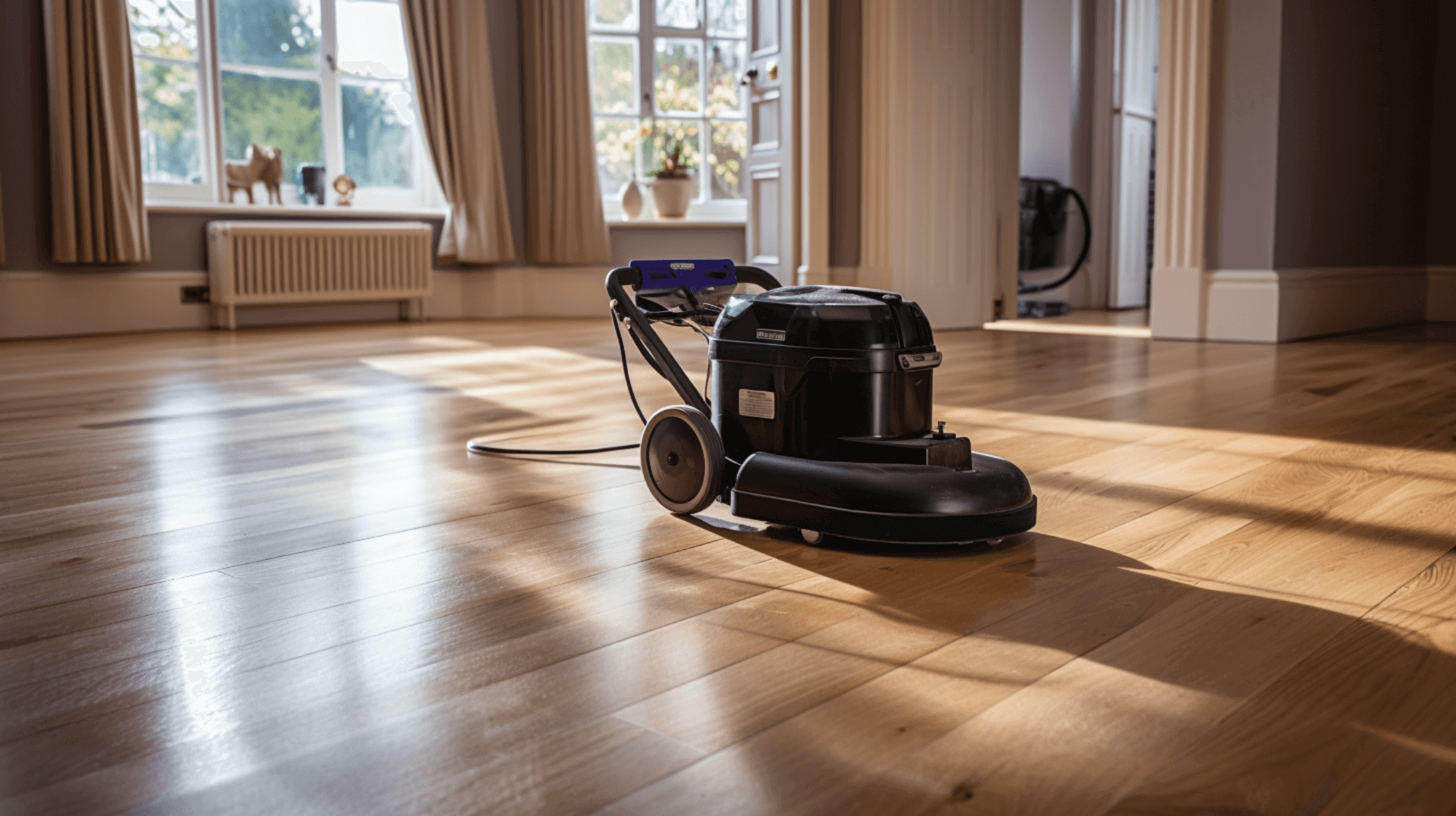
Successful strategies for preventing scratches on wooden floors have been implemented in a variety of settings, with positive results. These strategies include regular maintenance, the use of furniture pads, and professional services.
Regular maintenance is essential for preventing scratches on wooden floors. A regular maintenance routine helps to keep the floor clean and free from dirt and debris, which can cause scratches and other damage. Additionally, furniture pads should be inspected regularly and replaced when necessary. It is also important to avoid using abrasive cleaning products, such as steel wool or scouring pads, as they can cause scratches. It is also important to avoid using wax, petroleum-based cleaners, oil soaps, and non-recommended cleaning products, as they can damage the finish or cause adhesion problems with future maintenance coats.
Professional services, such as those offered by GJP Floor Sanding, can provide comprehensive solutions for damaged or worn-out wooden floors. Our experienced team of professionals specializes in restoring the beauty and value of wooden floors while extending our lifespan. We can identify and address potential problems before we become serious, ensuring the longevity of the floor. Additionally, we can provide valuable advice on preventative maintenance, including the use of floor protectors, throw rugs, and proper cleaning products.
By implementing these strategies and adapting us to specific needs, home and business owners can effectively prevent scratches on our wooden floors. Regular maintenance, the use of furniture pads, and seeking professional services when needed can help maintain the beauty and longevity of wooden floors.
Expert Advice: Tips and Tricks from GJP Floor Sanding Professionals

GJP Floor Sanding professionals offer a range of expert tips and tricks for maintaining and protecting wooden floors. These tips can help prevent scratches caused by heavy objects, such as furniture and appliances.
First, it is important to use furniture pads to reduce friction and prevent scratches. Additionally, it is important to inspect furniture pads regularly and replace them when necessary. It is also important to avoid using abrasive cleaning products, such as steel wool or scouring pads, as they can cause scratches.
Second, it is important to use safety glides when moving furniture and appliances. Safety glides are designed to reduce friction and prevent scratches. Additionally, it is important to avoid dragging furniture and appliances across the floor, as this can cause scratches.
Third, ensuring that the entrance point to the home is of the correct size and providing adequate ventilation is crucial. This not only reduces emissions but also increases comfort and reduces bills for the householder.
Finally, using the proper cleaning products is essential. Wax, petroleum-based cleaners, oil soaps, and non-recommended cleaning products can damage the finish or cause adhesion problems with future maintenance coats. By following these expert tips and utilizing the resources offered by GJP Floor Sanding, home and business owners can effectively maintain and protect our wooden floors, preventing scratches caused by heavy objects and ensuring the longevity of the floor’s beauty and durability.
Contact Us: Get Your Wooden Floor Protected with GJP Floor Sanding
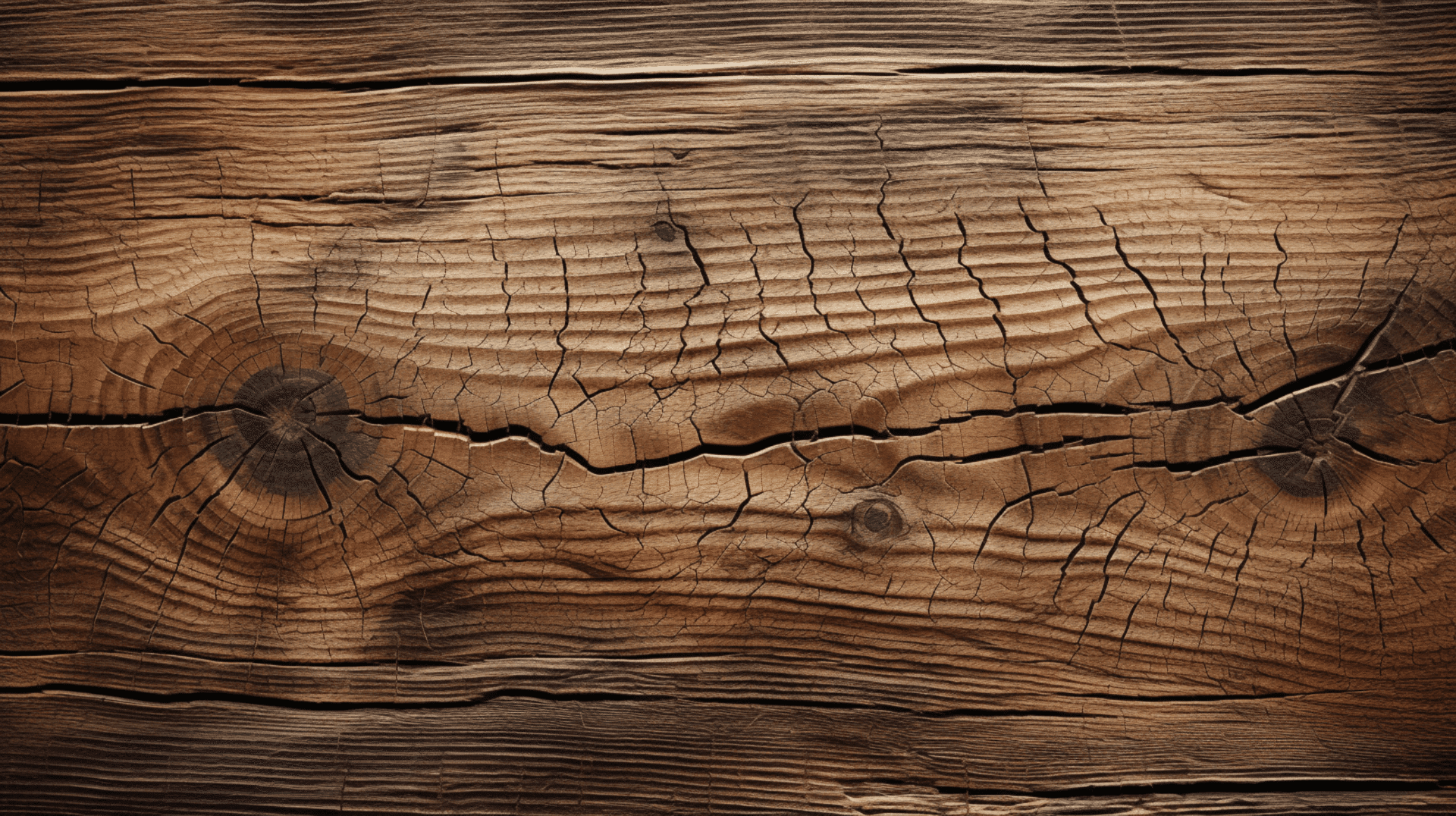
GJP Floor Sanding is the perfect choice for protecting and maintaining wooden floors. Our experienced team of professionals specializes in restoring the beauty and value of wooden floors while extending our lifespan. We offer a range of services, including sanding, staining, sealing, and waxing, as well as preventative maintenance advice. We also provide guidance on best practices for retrofit floor insulation, such as suspended timber floors, and can help with the installation of insulation, moisture control barriers, cold bridging, and protected species.
Home and business owners can get in touch with GJP Floor Sanding for our wooden floor needs by visiting our website or calling our customer service line. We offer free consultations and estimates, and our team of experts can provide valuable advice on preventative maintenance, including the use of floor protectors, throw rugs, and proper cleaning products. We also offer events and workshops to help customers save energy in our homes, as well as a range of additional resources, including a blog and video tutorials, to help customers maintain and protect our wooden floors.
When choosing GJP Floor Sanding for your wooden floor protection and maintenance needs, you can expect quality workmanship, competitive prices, and excellent customer service. We are committed to providing cost-effective solutions that meet the needs of our customers, while adhering to the most accepted industry practices. Contact GJP Floor Sanding today to protect and maintain your wooden floors.
